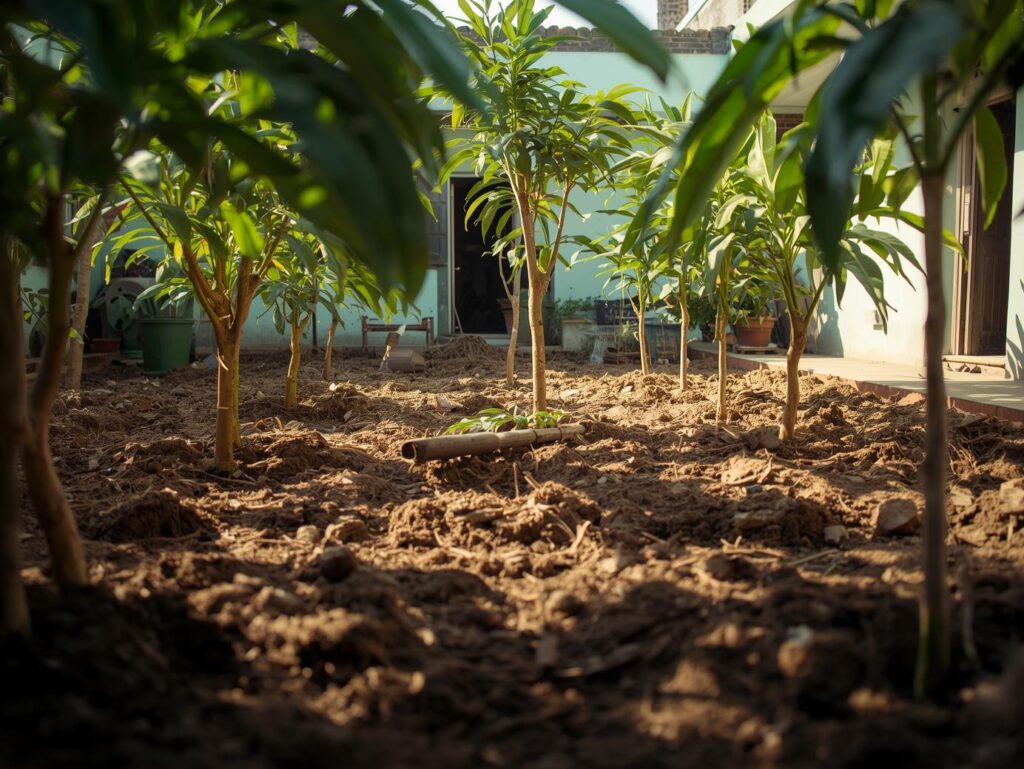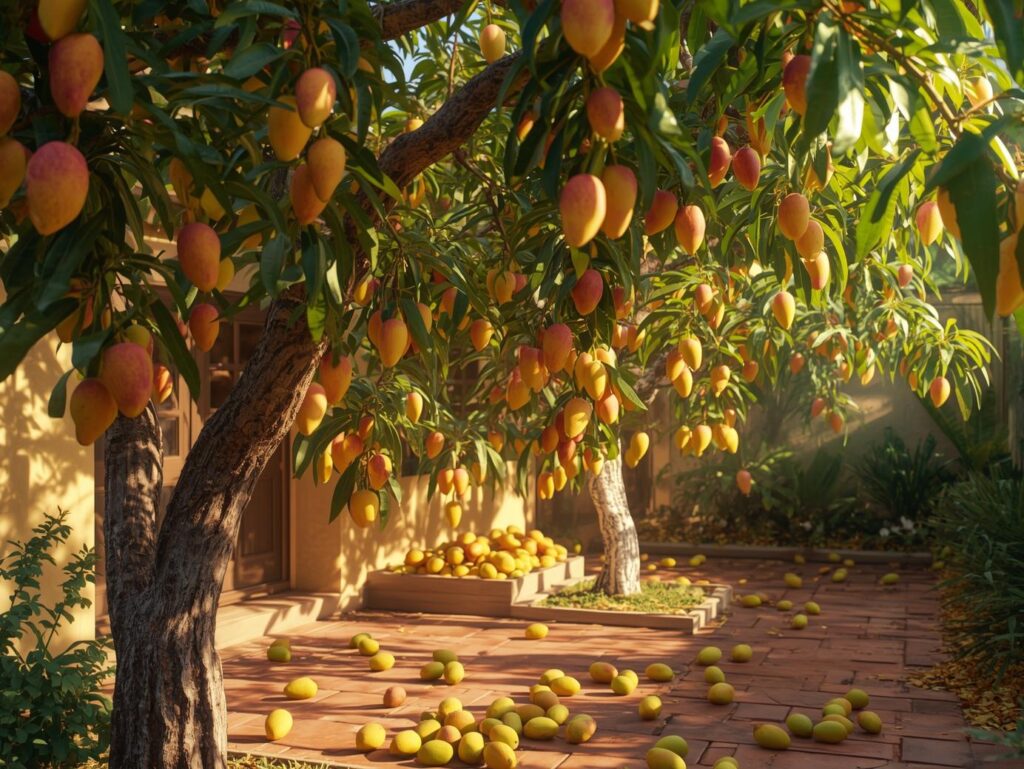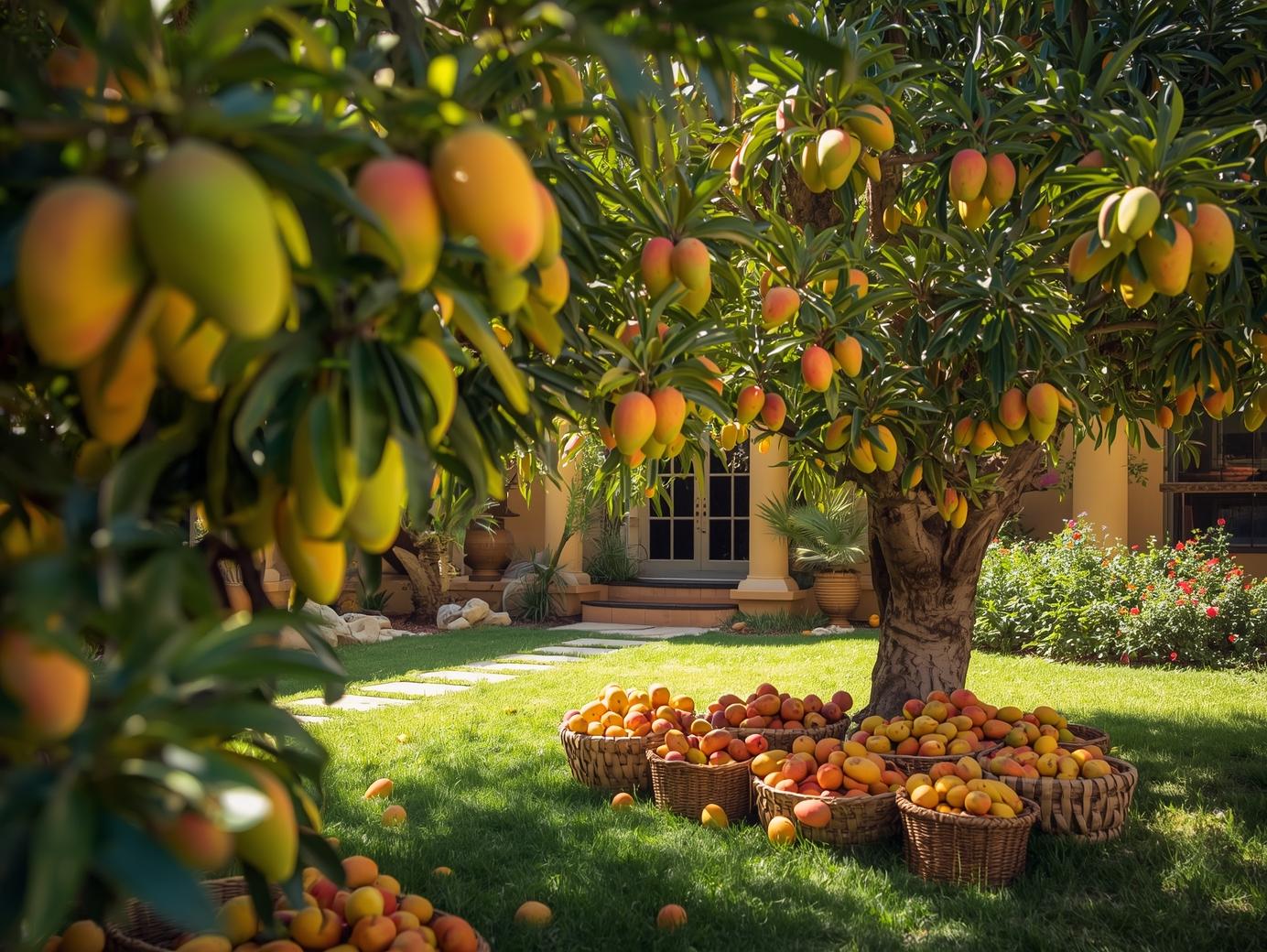Mangoes are among the most loved tropical fruits in the world, and with the right techniques, they can also be grown successfully in home courtyards in many parts of the United States. While traditionally suited for warm regions, the use of dwarf varieties and container gardening allows even homeowners in cooler areas to enjoy fresh, homegrown mangoes. From soil preparation to harvest, every stage of mango cultivation requires attention and care to ensure a healthy tree and abundant fruiting.
Soil Selection
The foundation of a healthy mango tree begins with the right soil. Mangoes prefer well-drained, sandy loam soil that is rich in organic matter. Heavy clay or waterlogged soil can cause root rot and hinder growth. For courtyard planting, it is best to prepare a soil mix that combines garden soil, coarse sand, and compost in equal proportions. A slightly acidic to neutral pH range, ideally between 5.5 and 7.5, supports optimal nutrient absorption. Good soil drainage is crucial because mango roots do not tolerate standing water.
Site Preparation
Before planting, careful site preparation ensures the mango tree has the best environment to establish its roots. Select a sunny spot in your courtyard that receives at least six to eight hours of direct sunlight daily. Remove any weeds, debris, or competing plants from the area. If you are planting in the ground, loosen the soil to improve aeration and root penetration. For container planting, choose a pot that is at least 15 to 25 gallons in capacity with proper drainage holes. Enrich the soil with compost or aged manure before planting to provide a steady nutrient base for the young plant.

Planting
Planting mangoes at the right time and in the correct manner is vital for strong growth. In the United States, spring is the best season to plant mango trees, as warmer temperatures encourage faster root development. When planting in the ground, dig a hole twice as wide and slightly deeper than the root ball. Place the sapling in the center, ensuring the graft union remains above soil level. Backfill with the prepared soil mix, firm it gently, and water thoroughly. For container-grown trees, position the plant in a large, well-draining pot and place it in full sun. Dwarf mango varieties are ideal for courtyards as they adapt well to limited spaces.
Watering
Proper watering is key to establishing a strong mango tree, especially during its early stages. Young plants need consistent moisture, but the soil should never stay soggy. Water the tree deeply two to three times a week during the first year, reducing frequency once it matures. During the flowering and fruiting stages, increase watering slightly to prevent stress and fruit drop. In cooler climates, avoid overwatering during winter dormancy. A thick layer of mulch around the base helps conserve moisture, regulate soil temperature, and suppress weeds.
Fertilizing
Feeding your mango tree regularly supports healthy growth and enhances fruit quality. Start with a balanced fertilizer, such as a 10-10-10 NPK formula, applied every six to eight weeks during the growing season. As the tree matures, switch to a fertilizer higher in potassium and phosphorus to promote flowering and fruit development. Organic alternatives like compost tea, bone meal, and fish emulsion also work effectively. Avoid excessive nitrogen, as it encourages leafy growth at the expense of fruit production. Always water the plant after fertilizing to help nutrients reach the roots.
Pruning and Training
Pruning is essential for shaping mango trees, maintaining manageable size, and encouraging air circulation. Begin pruning after the first year to establish a strong framework of three to four main branches. Remove dead, diseased, or crossing branches regularly to prevent overcrowding. For courtyard or container trees, pruning keeps the tree compact and promotes better light penetration. Training the branches outward allows sunlight to reach all parts of the canopy, improving both growth and fruiting. Regular pruning after harvest ensures continuous productivity in the following season.
Pest and Disease Control
Mango trees, like all fruit plants, can attract pests and diseases if not managed properly. Common issues include aphids, mealybugs, scale insects, and anthracnose fungal infection. Regularly inspect the leaves and fruits for early signs of trouble. Natural remedies such as neem oil, insecticidal soap, or a mild baking soda spray are effective and safe for home use. Avoid overwatering, as excess humidity promotes fungal growth. Good airflow, proper pruning, and sanitation around the planting area reduce pest infestations and disease outbreaks significantly.
Fruiting and Harvest

Mango trees typically begin to bear fruit within three to five years, depending on the variety and growing conditions. Flowering usually occurs in late winter to early spring, followed by fruit development through summer. Proper nutrition, sunlight, and watering during this period are crucial for high-quality mangoes. The fruits are ready to harvest when they turn from green to a golden-yellow or red hue and emit a sweet aroma. Harvest carefully to avoid damaging the skin, as bruising shortens storage life. Allow the mangoes to ripen at room temperature before enjoying their rich, tropical flavor.
